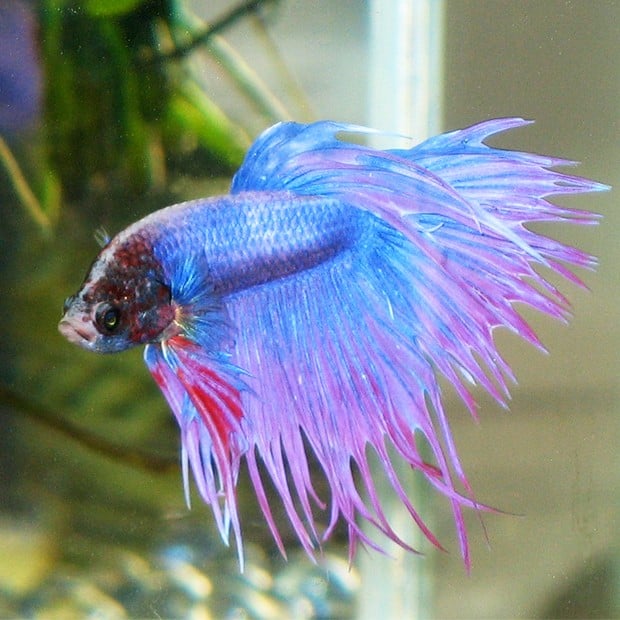Betta Fish Life-span: How to Ensure Your Betta Lives Longer
Just How to Reproduce Betta Fish Successfully: Specialist Strategies and Insights for Hobbyists Aiming To Broaden Their Betta Collection
Breeding Betta fish calls for a nuanced understanding of genes and environmental conditions, making it necessary for enthusiasts to approach the process with both persistance and care. Developing an optimum reproduction atmosphere, picking the ideal sets, and observing the intricacies of their courtship habits are fundamental actions that can dramatically impact the result.
Comprehending Betta Fish Genes
Understanding the genetics of Betta fish is essential for successful reproduction, as it affects attributes such as shade, fin shape, and behavior. Betta fish exhibit a varied selection of shades and patterns, greatly figured out by their genetic makeup.
Along with pigmentation, fin morphology is an additional substantial element of Betta genetics (betta fish). The sizes and shape of fins are affected by numerous genes, including those that identify whether the fins are brief, long, or veil-shaped. Comprehending these hereditary variations helps dog breeders forecast the phenotypic end results of their spawn
Moreover, behavior qualities such as aggressiveness and territoriality can also be affected by genetics. These behaviors play a vital duty in the reproducing process, as they can affect generating success and the general character of the resulting fry. By comprehensively recognizing these genetic principles, dog breeders can make educated decisions, ultimately boosting their breeding programs and achieving preferable results.
Preparing the Reproduction Setting
Producing an optimal reproduction environment is essential for the effective reproduction of Betta fish. The initial step in preparing this setting is to pick a proper breeding storage tank, preferably ranging from 5 to 10 gallons.
Following, consider using a sponge filter or an air rock to provide mild water circulation without developing solid currents that can stress the fish. It is necessary to set up plants or reproducing cones to offer hiding areas and promote convenience for the lady throughout the spawning process. Floating plants, such as Java moss or water sprite, can also develop an extra native environment while assisting in bubble nest building by the male.
Prior to presenting the breeding pairs, make certain the water is conditioned and cost-free from harmful chemicals, such as chlorine or hefty steels. betta fish. Routine water modifications should be conducted to maintain optimal water quality, improving the possibilities of effective reproduction. With these prep work in area, the reproducing setting will certainly sustain the health and well-being of both Betta fish
Choosing Reproduction Pairs
Selecting the ideal reproduction pairs is vital for attaining successful Betta fish recreation. When picking your reproduction pairs, think about a number of crucial aspects consisting of linked here health and wellness, character, and genetics. Healthy Betta fish display dynamic colors, clear eyes, and active actions. Picking fish that are without illness ensures a better opportunity of creating practical offspring.
Temperament is another vital factor to consider, as Betta fish are known for their hostile nature. It is a good idea to choose a male and lady that exhibit suitable characters to reduce tension throughout the breeding process. A calm man can urge a smoother courtship, while a woman that is as well hostile might interrupt the procedure.
Hereditary background additionally plays a substantial function in the quality of the spawn. Reproducing fish that are genetically varied can reduce the danger of hereditary wellness issues and boost the overall vigor of the fry. It is beneficial to investigate the family tree of both the male and woman, concentrating on preferable characteristics such as fin kind, shade patterns, and size.
The Reproduction Refine
The reproduction process of Betta fish needs mindful preparation and attention to detail to make certain a successful result. Originally, it is vital to prepare an appropriate reproduction tank, preferably a 5-10 gallon fish tank with a temperature preserved at 78-80 ° F. The storage tank needs to be geared up with a heater, filter (ideally sponge type to prevent solid currents), and lots of aquatic plants for the woman to conceal.
Once the setting is established, introduce the picked breeding set to the tank, enabling them to accommodate. Observe their habits; the man will certainly display sophisticated courtship routines, including flaring his fins and constructing a bubble nest. If the female shows passion, she will show upright stripes showing readiness for spawning.
When the female is responsive, the set will involve in a breeding accept, during which the male feeds the eggs. Preserving optimal water conditions throughout this period is important for the advancement of healthy Betta fry.
Caring for Betta Fry

Feeding Betta fry is crucial, as they need a diet high in protein. Originally, they can be fed infusoria or liquid fry food, transitioning to carefully crushed high-quality pellets as they get more grow. Feed small parts multiple times a day to urge healthy development without straining the tank with leftover food.

As they develop, monitor their development closely and divide any type of hostile individuals to prevent injury. By offering a nurturing setting and appropriate nourishment, enthusiasts can successfully elevate Betta fry right into vibrant, healthy and balanced fish, ultimately boosting their reproduction endeavors.
Verdict
Successful Betta fish breeding needs careful attention to hereditary choice, environmental problems, and look after the fry. By recognizing the genetics of Betta fish and preparing an ideal breeding setting, hobbyists can enhance the opportunities of producing vivid, healthy spawn. Selecting suitable breeding pairs and very closely keeping track of the courtship and generating procedures are essential. Supplying optimal care for the fry ensures their healthy and balanced growth, contributing to a thriving Betta collection.